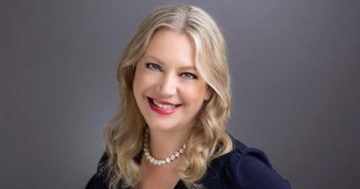Scott A. Scanlon, Dale M. Zupsansky and Stephen Sawicki* say diversity, equity, and inclusion has made progress in the boardroom at an unprecedented pace, according to Egon Zehnder’s new Global Board Diversity Tracker report.
 For far too long, leadership positions have been less accessible for women than their male peers.
For far too long, leadership positions have been less accessible for women than their male peers.
This has resulted in frustrating gender imbalances across organizations’ top ranks globally—seven per cent of the world’s largest companies still have all-male boards, and only 10 per cent of Fortune 500 CEOs are women.
But despite longstanding barriers, female leadership is on the rise, according Egon Zehnder’s Global Board Diversity Tracker 2022-2023 (GBDT).
At the board level, there has been steady investment in diversity, equity, and inclusion, with one in three new hires being women and 27 per cent of board seats being held by female directors globally.
This is the fastest pace of progress the search firm has seen since tracking these stats.
“It’s heartening to see the calls for diversity from business stakeholders and broad awareness from business leaders being translated into action globally,” the Egon Zehnder report said.
“So, as the composition of boards change in real time, the question left is, what’s next? For chairs, making the most out of their increasingly diverse board starts with fostering a culture of inclusion.
Broadly, this means creating the space and the opportunity for all the diverse perspectives around the table to be shared and embracing and owning a leadership role that develops, integrates, and nurtures every director’s perspective regardless of tenure or background.
For rising talent, this means adopting strategic steps to enhance your readiness, and learning how to position yourself to land your first corporate board seat, according the report.
The firm notes that first-time directors, especially, will need self-reflection to overcome potential insecurities about their new responsibilities, new setting, and new peers.
This journey looks different for everyone.
As part of Egon Zehnder’s GBDT study, they have heard firsthand from women who have built thriving careers as executives and board members (watch these interviews here).
These individuals shared with the firm what if felt like to navigate biases, unfavourable conditions, and fewer opportunities in relation to their male peers.
“Not only did these women succeed, but they’re also addressing the gender gap by opening doors for and developing female talent,” Egon Zehnder said.
“We have also heard from board chairs who have embedded DEI within their boards and actively pursue opportunities for female talent.”
Below, Egon Zehnder highlights some of these inspiring stories.
“These leaders’ viewpoints can hopefully inspire all of us to be more understanding, compassionate, and intentional about creating more equitable opportunities and inclusive cultures that will sustain momentum for female leadership,” the firm said.
Embracing Wholeness
“Earning a board seat doesn’t automatically mean your perspective is going to be heard,” Egon Zehnder said.
“In fact, when the inclusion culture is absent, a possible blind spot boards face is related to dynamics.” As Robin Washington, a board member of Alphabet Inc., Salesforce Inc., and Honeywell International Inc., said: “I remember being on a board and it was, ‘Well, you’re new. You’re not supposed to say anything for X amount of time.’
“That’s not the board I want to be on right now. I don’t want to be on a board where the only opinion that they want is my financial opinion.
“I want to be on a board where we are cultivating an environment where, if we don’t have all the experience in the business, we’re learning it.
“We all bring different skill-sets to bear.
“But we’re collaborating and using our diversity of thought to help support leadership and management in making the right decision.”
Board directors don’t just bring technical expertise, but a full combination of life experiences, backgrounds, soft skills, and much more, according to the Egon Zehnder report.
The firm says that board chairs should proactively embrace the “wholeness” in every director because tapping into this diverse group is what can lead to a more effective and creative board.
Toni Townes-Whitley, who serves on the boards of Nasdaq, PNC Bank, and the Thurgood Marshall College Fund, said: “It’s about setting the tone of an inclusive environment, creating opportunities for debate—respectful debate—and then modeling how to interrogate an idea, not a person.”
Egon Zehnder says that nurturing a myriad of perspectives can help prevent groupthink and lead to productive debate.
“This diversity means that we’re going to naturally have miscommunications,” said Yvonne Hao, who serves on the boards of CarGurus, Flywire, Gentherm, ZipRecruiter, and Beth Israel Lahey Health.
“It takes more effort to say ‘Wait a minute. Let me just ask, what did you mean? Help me understand why you think that’s going to be helpful to the company.’”
Increasing Female Visibility
Systemic barriers such as implicit bias, sticking to familiar talent pools, and an overall lack of DEI awareness have historically made women less visible, according to the Egon Zehnder report.
“Fortunately, these legacy practices are changing, and as more diverse leaders are appointed to boards, their unique perspectives and backgrounds notably contributes to more effective decision-making,” the firm said.
“Progress is happening all over the world as organizations break these barriers.” Chair of Mahindra Group Anand Mahindra believes that to truly consider all qualified talent, companies should rethink what parameters of qualification to serve on a board should be.
“There was always somebody you could get if you broadened your horizon into not looking just for a CV, which said, you know, this was the corporate history of that woman,” he said.
“You have to recognize that women in other fields bring tremendous value too. And I think that’s something we still have to do.”
Maria Loreto Silva, independent director at Barrick Gold agrees that equal opportunity should be the norm.
“When I was chairwoman of the national petroleum company in Chile, I really allocated a lot of resources to hunt for female talent,” she said.
“As a result, 50 per cent of our top executives were women. And they were very, very talented, very prepared.
“As chair, you need to make a strong decision if you want to improve….I would also say to the new female executive and board members to take advantage of any opportunity that is presented to them.
“That is very important in Latin America because many women quit in the road up.”
When it comes to visibility, personality can influence how women are perceived.
Vivianne Blanlot, a board member of Colbún S.A., CMPC S.A, Antofagasta plc and the former defense minister of Chile notes that she’s always felt very seen because of her strong opinions.
“It made me visible because in every instance of my work, I had a conflict with people that thought differently, but I never stopped defending what I thought,” she said.
Her strong views led her to a top government post but finding other women for the team was more challenging.
“The difficulties were, how to include more women, and not to expect that to be there, you had to have a very long experience and to be very visible, because there are many women that are really great minds, and they should be in boards, but they’re not so well known,” Ms. Blanlot said.
The Experience of Being an “Only”
Loneliness in leadership can come in many forms.
Being an “only” is one of them, especially for women in positions of power.
For Ms. Hao, as often the youngest in the room, the only non-white or only Asian-American person, and the only (or one of few) woman, this has been a common thread.
“I sit in these board meetings, especially as a board member thinking, ‘How do I just not screw up? How do I not say something stupid that they’re going to realize they made a mistake and they’re going to kick me off?’” she said.
“These sentiments of insecurity reinforce the role of the chair in developing an inclusive culture.”
Sometimes, this can also spark “aha-moments.” This happened to Ana Maiguashca, co-director and member of the board of directors of Banco de La Republica in Colombia.
“When I got to the board of directors of the Central Bank, I was the second woman to hold that position, and that forced me to think about gender,” she said.
“In the first interviews, none were entirely centered on what I was thinking about monetary policy, but were hovering around, ‘You are the second woman to get to the board.’ It was then that I knew it was not neutral for me to be a woman in this world—it has been different. And what rankled me most was I did not reflect upon those differences while I was living them.”
Luiza Helena Trajano, chairwoman of Brazilian retailer Magazine Luiza, has seen culture improvement and quality of work as gender representation increases.
“I have often been the only woman in many places for a long time and I saw how much the balance of male/female changed the dynamics of these places,” she said.
“Having a gender mix has always been much more enjoyable, and participative, and less so than the serious, heavy thing that didn’t lead to anything. So, for all these reasons I have always been in favor of gender representation.”
“We are encouraged by so many female leaders and allies who are dedicated to diversity, equity, and inclusion every day,” the Egon Zehnder report said.
“With sustained effort and commitment, we have the potential to transform the composition of our boards and senior leadership around the world to include women and underrepresented minorities who will play a key role in shaping the direction of the world’s leading companies.
“By combining the power of their diverse voices with stakeholder support, we can help move the needle for these leaders to maximize their visibility, enhance their readiness, and break the glass ceiling that has long prevented them from advancing at the same pace as male leaders to leadership positions.”
*Scott A. Scanlon, Editor-in-Chief; Dale M. Zupsansky, Managing Editor; and Stephen Sawicki, Managing Editor – Hunt Scanlon Media.
This article first appeared at huntscanlon.com











